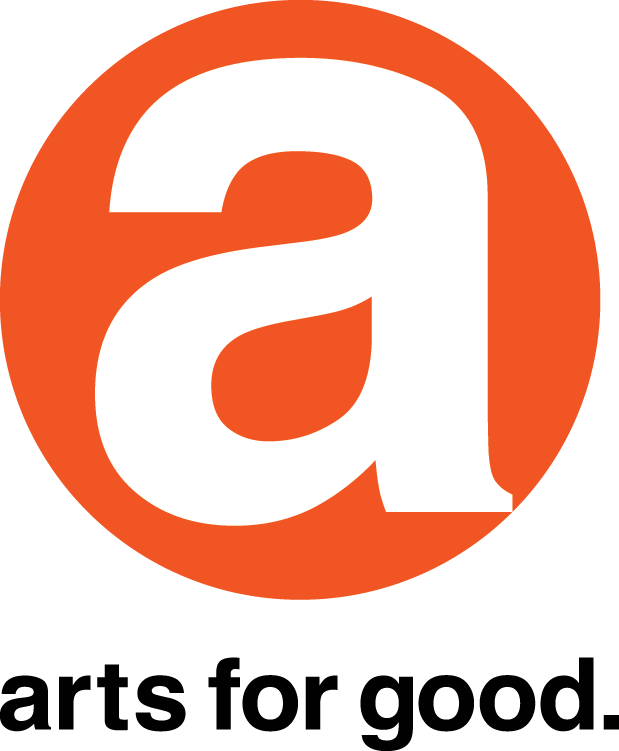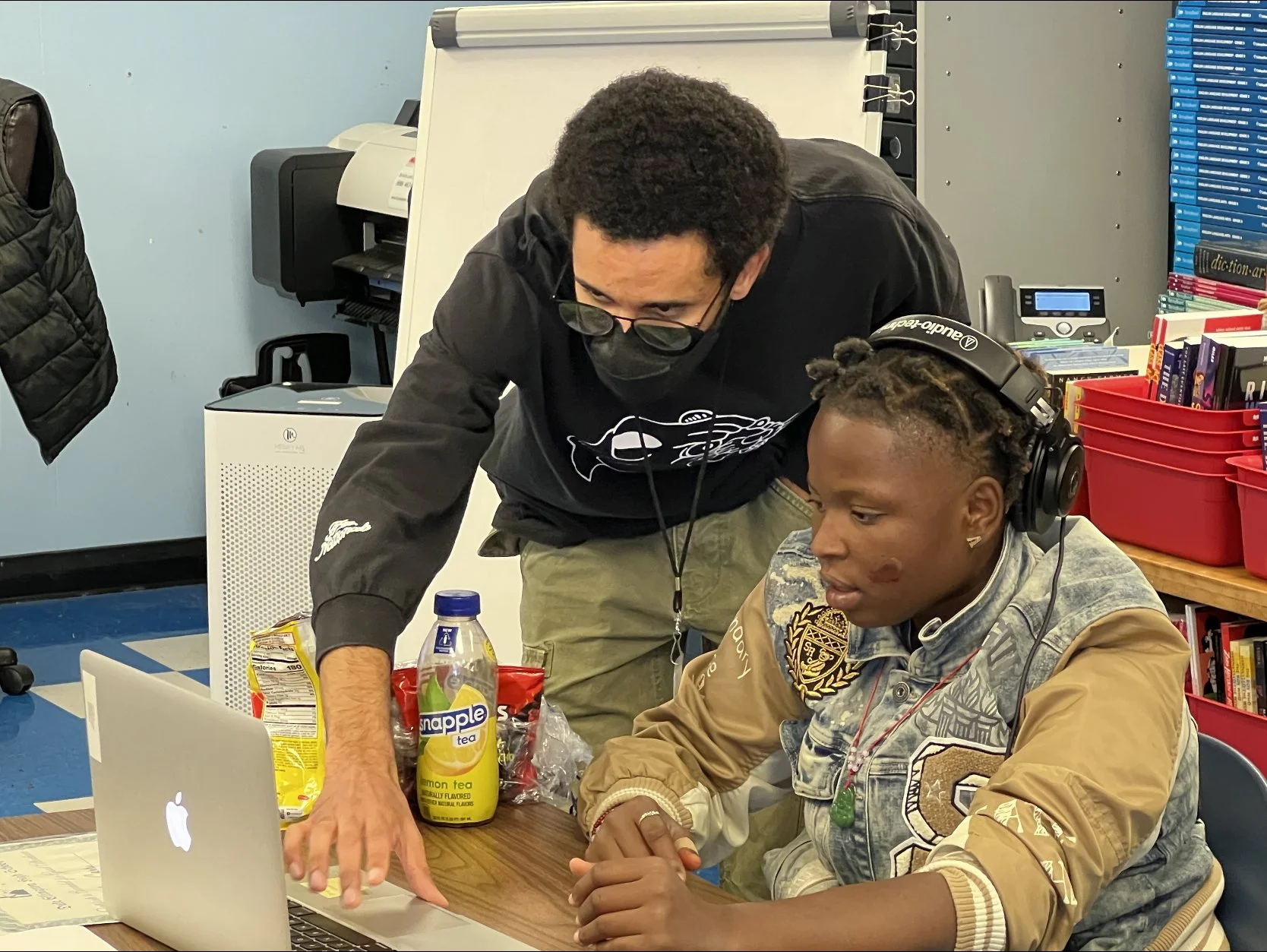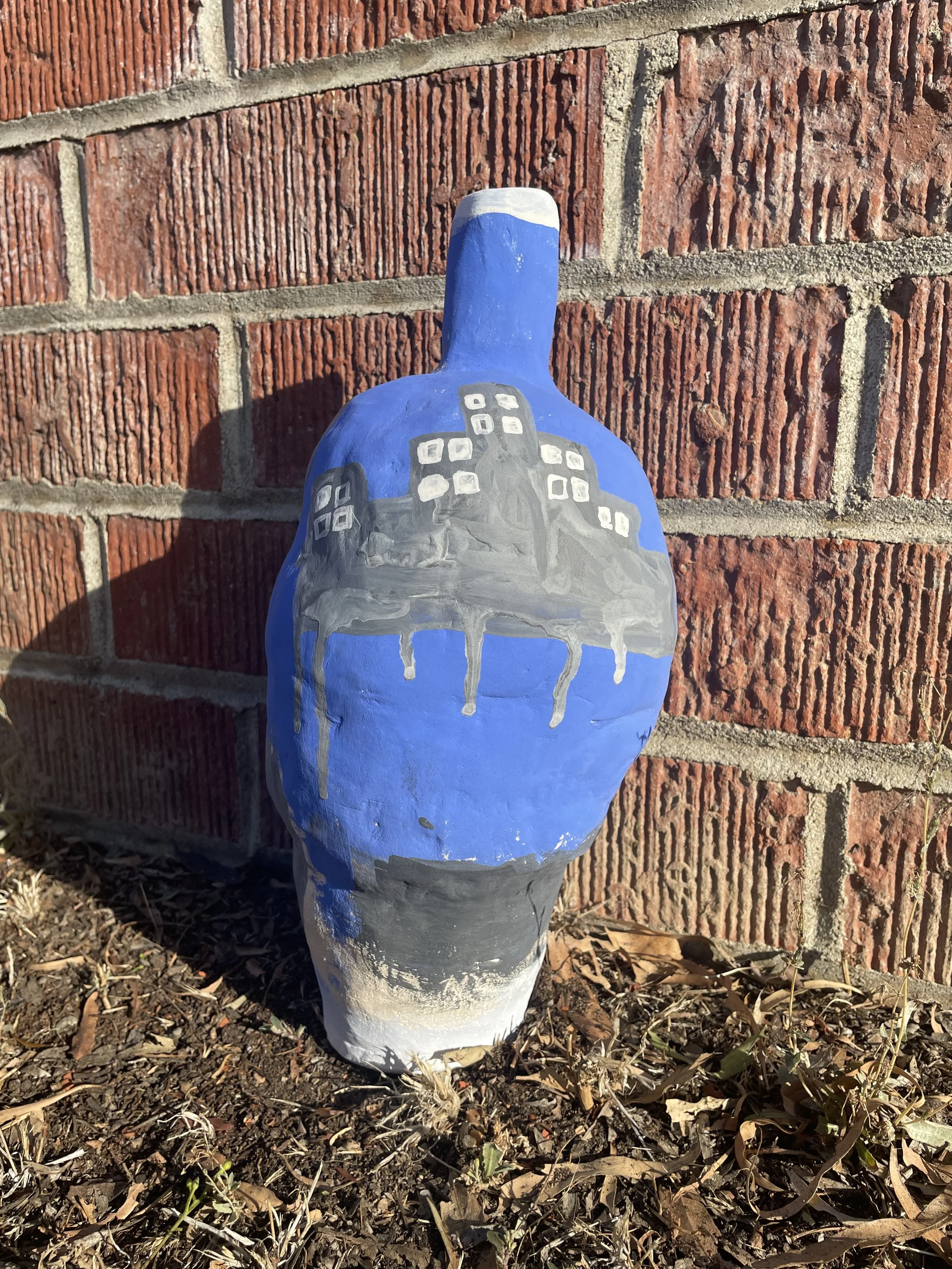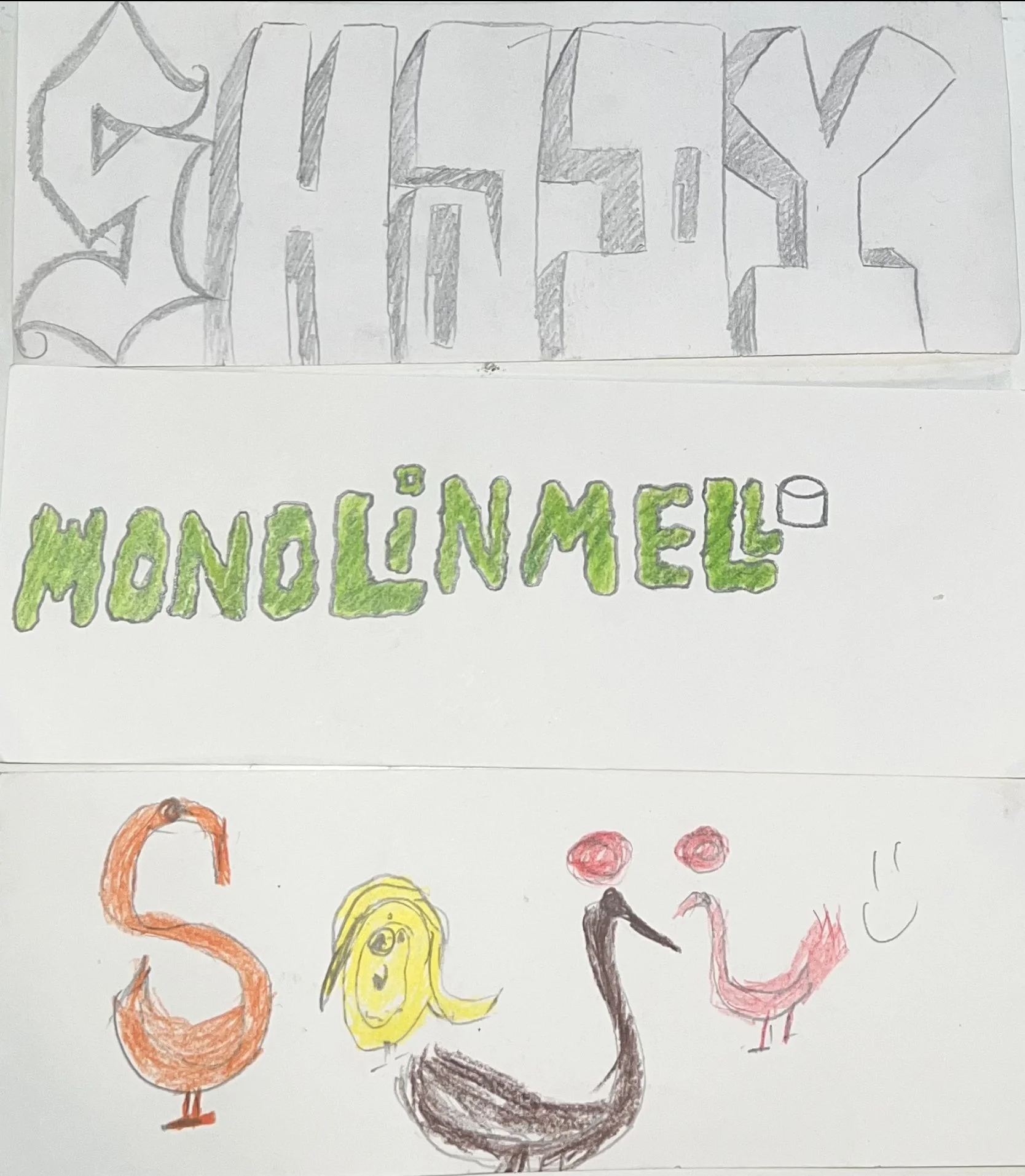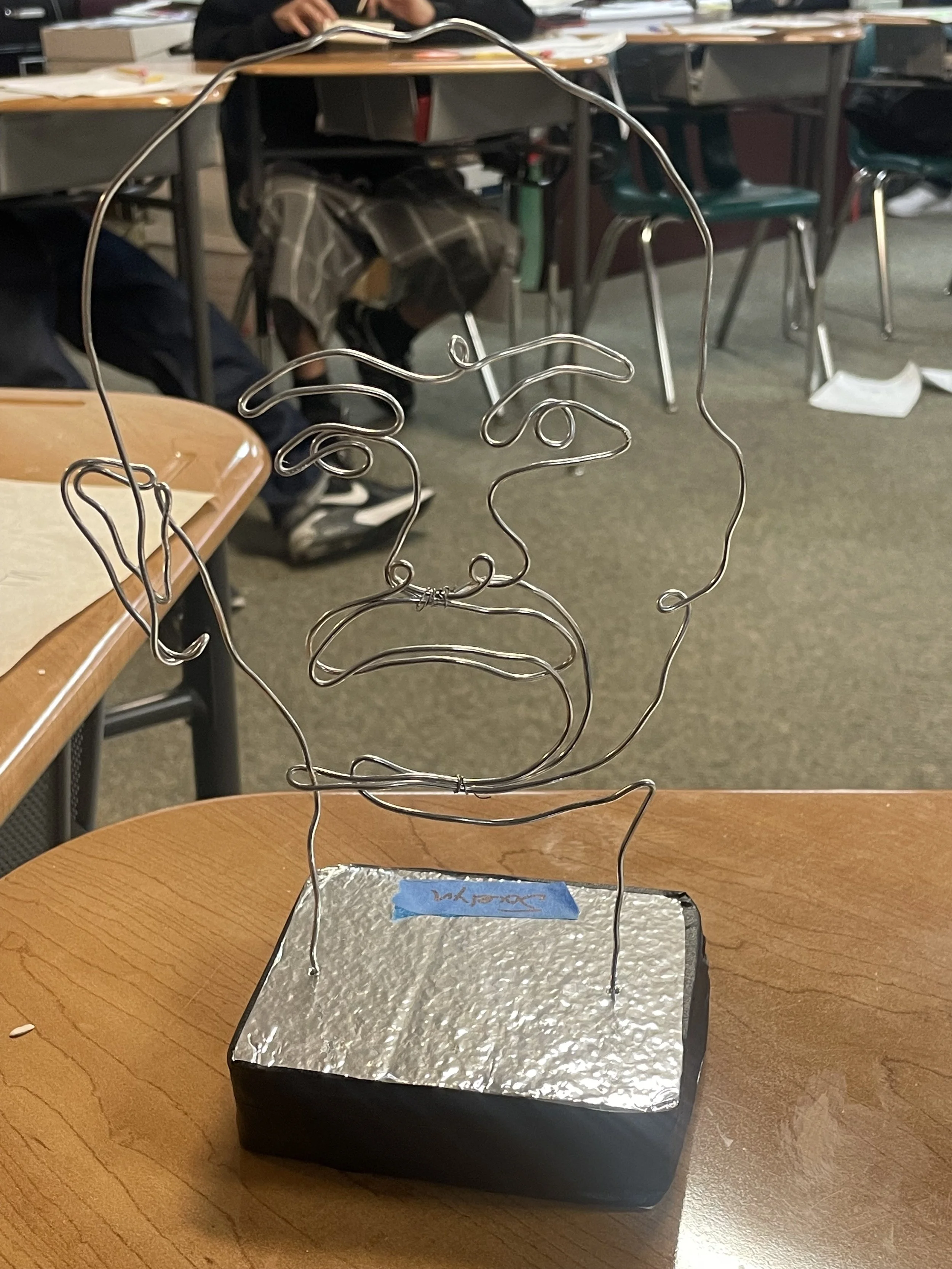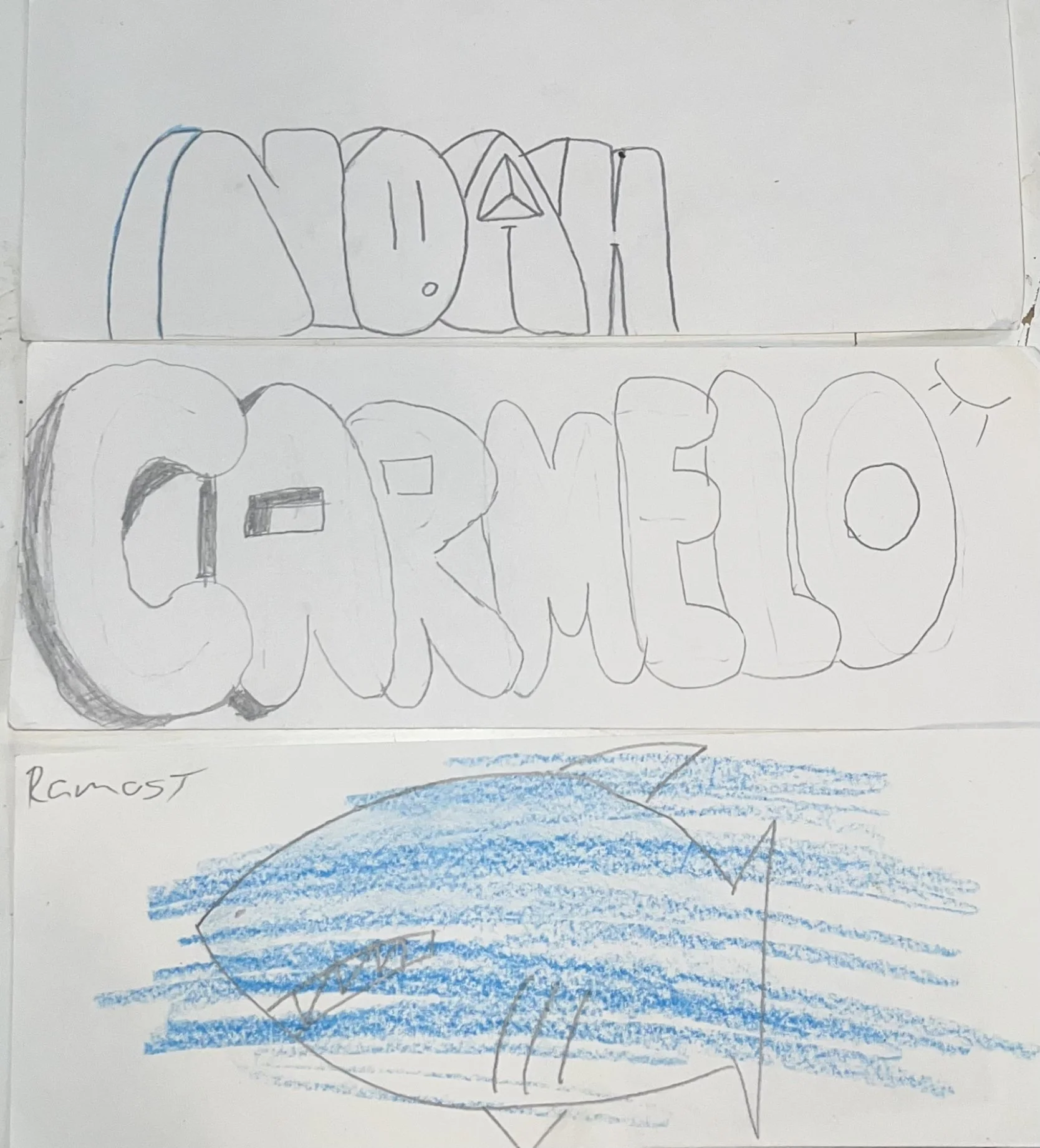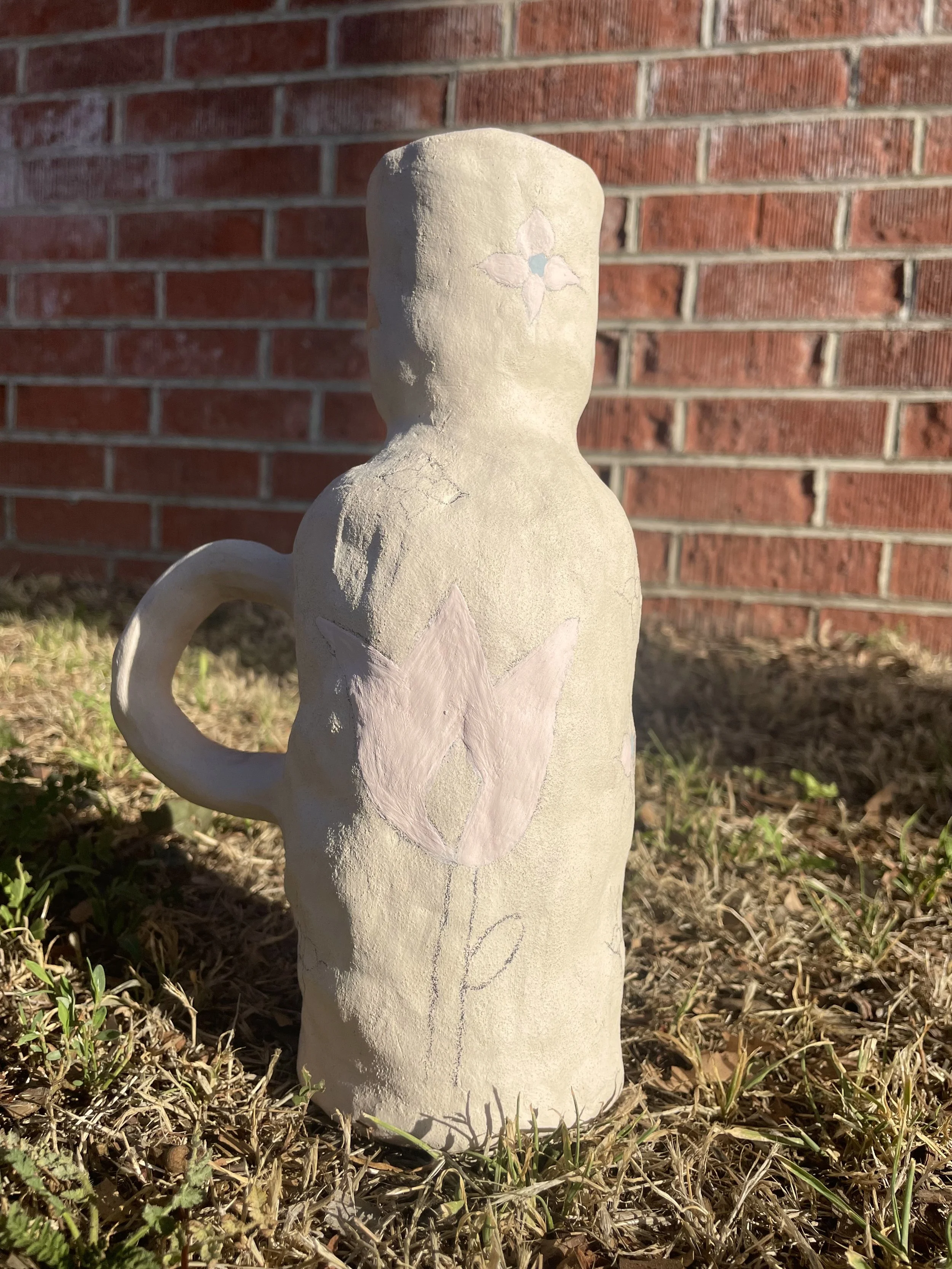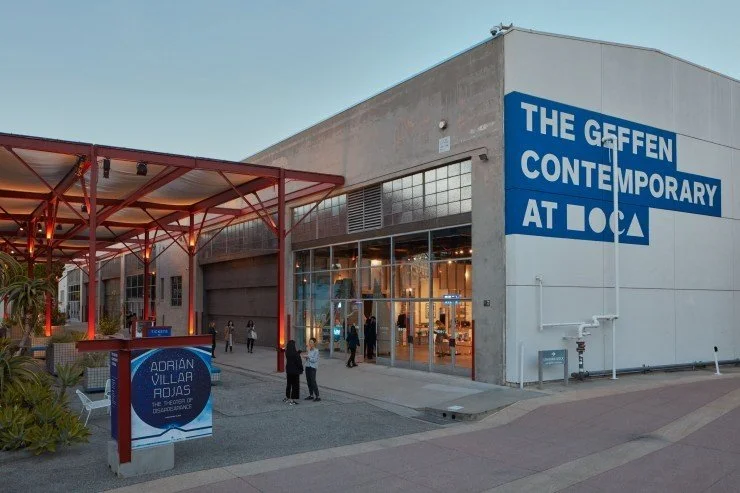
TRACING OUR ENVIRONMENT,
TRACING OURSELVES
The Geffen Contemporary at MOCA
How do artists question the way we see the world around us?
How does art change the way we see our environment? Guided by Teaching Artists and inspired by solo exhibitions of the work of Paul Pfeiffer and Eddie Rodolfo Aparicio at MOCA, artworxLA participants used art to trace their relationships to identity, place-making, media and spectacle.
The art of Eddie Rodolfo Aparicio makes connections between Central America and Los Angeles, focusing on multiple sites as part of the same community and history. His recent works address the intersection of social and environmental justice through specific uses of material. By painting latex rubber onto the trunks of trees in the LA neighborhoods where he grew up, he creates casts that capture the trees’ textures, markings, and surface layers while also connecting the history of the ficus tree to the history of Central American communities that have lived and grown in the same areas. His use of materials like rubber and amber have strong ties to indigenous knowledge and reclaiming histories in the face of colonial erasure. In their own works, artworxLA students considered the ways humans mark their existence and the intersecting stories held in materials, images, and objects.
Paul Pfeiffer uses video, photography, sculpture, sound and installation to examine how media and spectacle wire the ways that we see. With strategic editing and sampling, Pfeiffer offers a new version of mass media images and footage from sporting events, concerts, films, and game shows that bring the viewer or spectator into focus. For their projects, artworxLA students created works that reflect on their own relationships to celebrity culture, sports, social media, content, and music that center their own perspectives on how media has changed for their generation.
tune in.
Press play to hear “Duke Ellington Mixtape,” the final project from artworxLA Teaching Artist Julian Samuels’s Level 1 Workshop at Duke Ellington High School this fall. Over the course of their semester, Samuels taught students fundamental laptop production techniques in Garageband. Using existing loops and samples, they experimented with editing and arranging elements to create recordings that critically consider the ways sound and music surround them in their daily lives.
complete an art activity.
solo ACTIVITY: TRACING MY ENVIRONMENT
Inspired by Paul Pfeiffer and Eddie Rodolfo Aparicio
LOOK:
Take a moment to notice all of the objects near and far from you, and choose one that interests you the most. Spend time looking at the object/s to notice details that you didn’t see the first time.
TRACE:
Hold up the transparent sleeve and trace the object(s) in front of you using the dry erase marker.
THINK:
What did you trace? Why did you choose that object?
group ACTIVITY: sculpting MY ENVIRONMENT
Inspired by Nancy Rubens
Prompt: How does art change the way we see our environment? How do artists question the way we see the world around us? When artists create art from everyday life, they provide us with a new way to look at objects and help us understand our world in ways we didn’t think of before.
Grab a sheet of paper.
Tear, fold, or crumple, or tape pieces of the paper into whatever shapes you come up with.
Using tape, work as a team to combine your paper pieces into your own sculpture.
watch and listen.
When artworxLA Teaching Artist Eddie Ruiz built a syllabus for his Pathway Independent Study Level 1 Workshop students, he gave them two goals: creating traditional and cultural expression in commercial and film productions through collaboration, and exploring interpersonal Los Angeles stories that can help heal our communities.
Click on this video to see how students responded to artist Paul Pfeiffer’s video work by editing the sound and visuals from popular media in their own lives!

